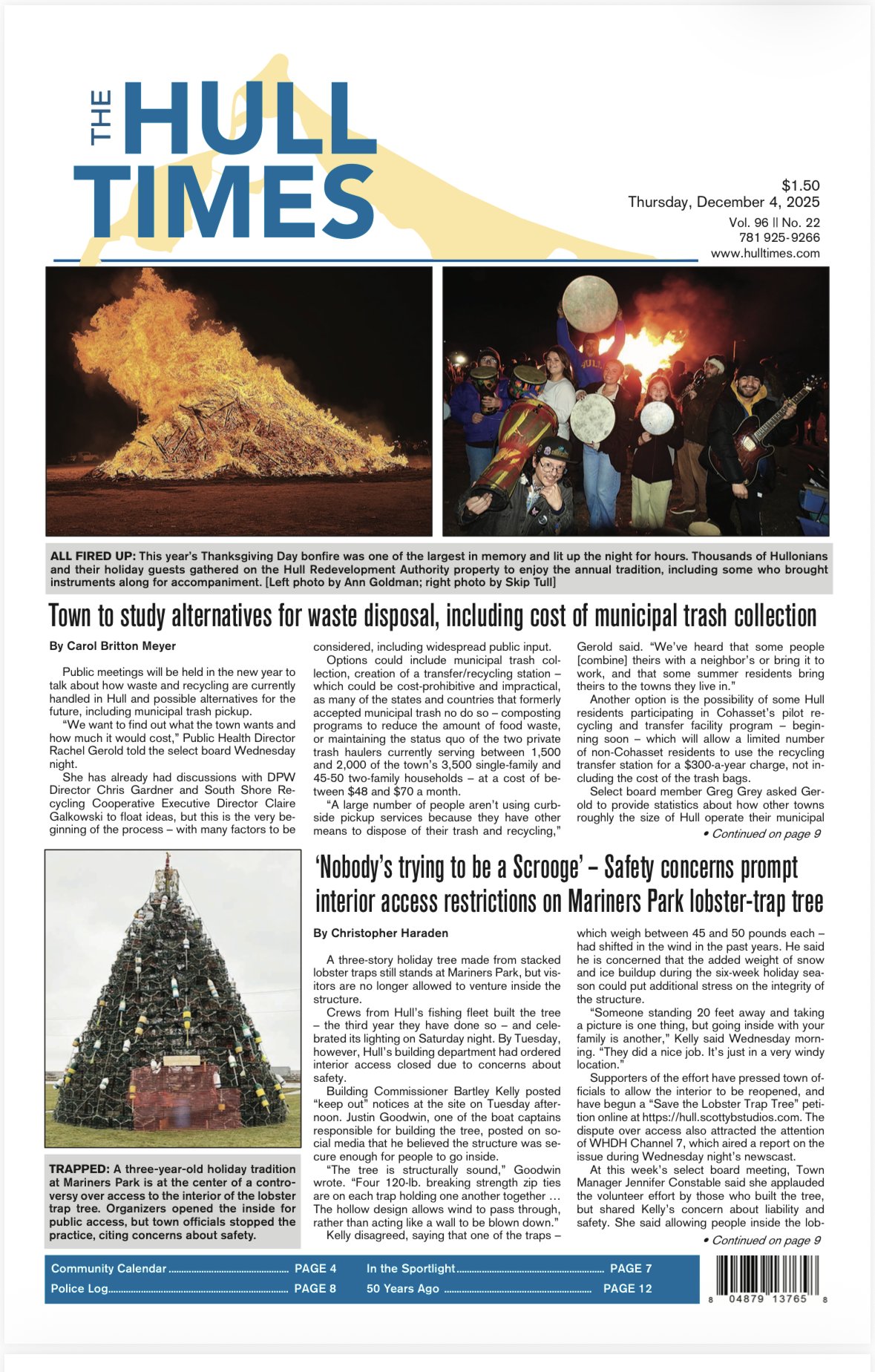Residents’ complaints prompt town to begin cleanup of knee-deep seaweed piles
/By Christopher Haraden
Amid complaints about large mounds of seaweed washed up on Nantasket Beach – and at least one dead deer – several town departments this week launched a plan for cleanup.
NO DAY AT THE BEACH: In response to residents’ complaints about massive amounts of seaweed washed up on Nantasket Beach, Hull’s public works crews began pushing the piles toward the water line to be taken by the outgoing tides. The work is expected to be completed by the end of the week. [Richard W. Green photo]
DPW Director Chris Gardner said Wednesday that crews are moving the seaweed down the beach toward shore be taken with the outgoing tides.
“The seaweed is being pushed back into the water with a front-end loader with a rake attachment,” Gardner said. “It’s been a practice we have used for years and works well. The town has a process that is required to follow before any machines can be put on the beach.”
On Tuesday, Public Health Director Rachel Gerold acknowledged in a memo that her office had “received numerous complaints from residents concerning the accumulation of seaweed from B Street to N Street.”
“The large accumulations of seaweed will, if not removed, become infested with insects and could pose a present or imminent threat to the health or safety of the general public,” she wrote.
“We have all worked collaboratively and swiftly on a solution for cleaning the beach between B Street to N Street,” she said Wednesday. “We all will continue to monitor all of North Nantasket Beach.”
According to the town’s beach management plan, seaweed is removed only from the area between mean high water and 10 feet seaward of the dune. Seaweed may be removed with hand rakes or, if the accumulation is large enough, with machinery.
Click here to read Hull’s beach management plan
Residents from other neighborhoods – from Kenberma to Gunrock – also reported large buildup of seaweed on their sections of the beach.
On Sunday, DPW crews removed a dead deer from the sand near the dune opening at Revere Street. Gardner said no heavy equipment was used in that process in order to comply with the town’s beach-cleaning regulations. A few days later, residents reported seeing another deer swimming in the ocean.
The DPW director estimated that the seaweed movement operation should be completed by the end of the week.
Like what you’re reading? Stay informed and support our work with a Hull Times subscription by clicking here.
Do you have an opinion to share? Click here to write a Letter to the Editor.
© 2025 The Hull Times. All rights reserved.













